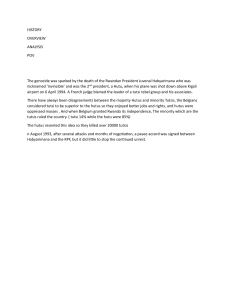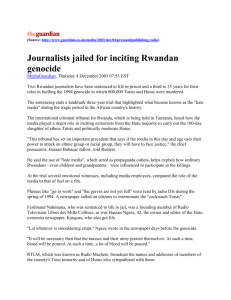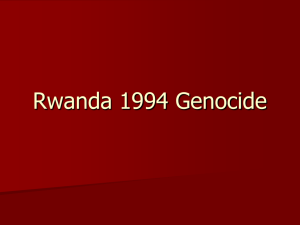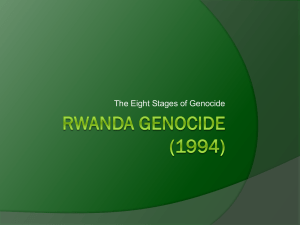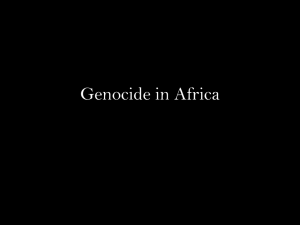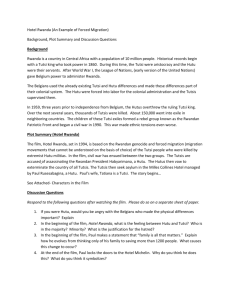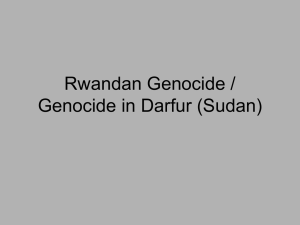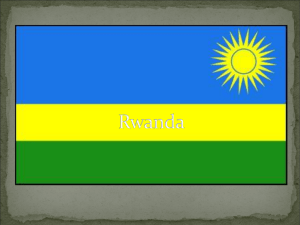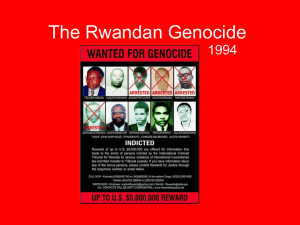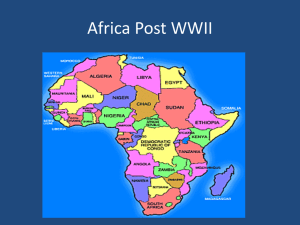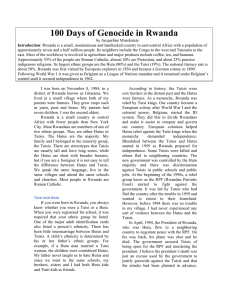Genocide in Rwanda - White Plains Public Schools
advertisement
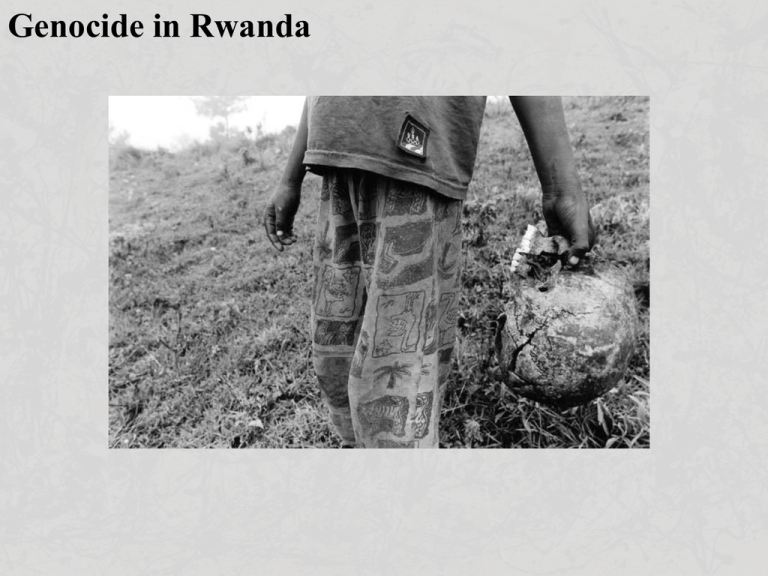
Genocide in Rwanda • The genocide began on April 6, 1994, and for the next hundred days, up to 800,000 Tutsis were killed by Hutu militia using clubs and machetes • It was sparked by death of Rwandan President Juvenal Habyarimana, a Hutu, when his plane was shot down above Kigali airport on April 6, 1994 • It is important to recognize that Rwanda is one of smallest countries in Central Africa, with just 7 million people • And that the nation is comprised of two main ethnic groups, Hutu and Tutsi • Although Hutus account for 90 percent of population; in the past, the Tutsi minority was considered the aristocracy of Rwanda and dominated the Hutu peasants • Ironically, the ethnic groups are very similar; sharing the same language, similar traditions, etcetera • But the Tutsis are taller and thinner, with some saying origins lie in Ethiopia • When the Belgian colonists arrived in 1916, they produced identity cards • Identity cards classified people according to ethnicity • The Belgians also considered the Tutsis to be superior to the Hutus and gave Tutsis better jobs and educational opportunities • Resentment among Hutus built up, culminating in a series of riots in 1959 • Tutsi refugees in Uganda, supported by some moderate Hutus, formed the Rwandan Patriotic Front (RPF) • President Habyarimana exploited the ethnic tension between Hutus and Tutsis and accused Tutsis living in Rwanda of being collaborators for the Rwandan Patriotic Front • When Habyarimana’s plane was shot down at the beginning of April 1994, it was the final nail in the coffin • Ethnic tensions exploded • In Kigali, presidential guard initiated a campaign of retribution • Leaders murdered and slaughtered Tutsis and moderate Hutus • Since all individuals carried identification cards specifying ethnicity, a practice left over from colonial days, these ‘tribal cards’ now meant life or death • Some Tutsis turned to the U.N. for protection • Ten United Nations peacekeeping soldiers from Belgium were captured by Hutus, tortured and murdered • The United States, France, Belgium, and Italy all began evacuating their own personnel from Rwanda • No international effort was made to evacuate Tutsi civilians or Hutu moderates • They were left to die • At U.N. headquarters, the killings categorized as a breakdown in cease-fire between Tutsi and Hutu • Labeling genocide would have demanded action • No international action was taken • Encouraged by the presidential guard and radio propaganda, an unofficial militia group, the Interahamwe (meaning those who attack together), mobilized • In some cases, Hutu civilians were forced to murder their Tutsi neighbors • Participants were often given incentives, such as money or food, and some were even told they could appropriate the land of Tutsis killed • The Hutu, without opposition from the world community, engaged in a genocidal mania; clubbing and hacking to death Tutsi families with machetes • Rwandan radio, controlled by Hutu extremists, encouraged the killings by broadcasting hate propaganda, and pinpointing locations of Tutsis in hiding • Many Tutsis took refuge in churches and mission compounds • These became the scenes of some of the worst massacres • Finally, in July, the RPF captured Kigali • The government collapsed and the RPF declared a ceasefire • As soon as it became apparent that the RPF was victorious, an estimated two million Hutus fled to Zaire (now the Democratic Republic of Congo) • Refugees included many who have since been implicated in the massacres • Rwanda’s now Tutsi-led government has twice invaded its twice much larger neighbor, saying it wants to wipe out the Hutu forces
